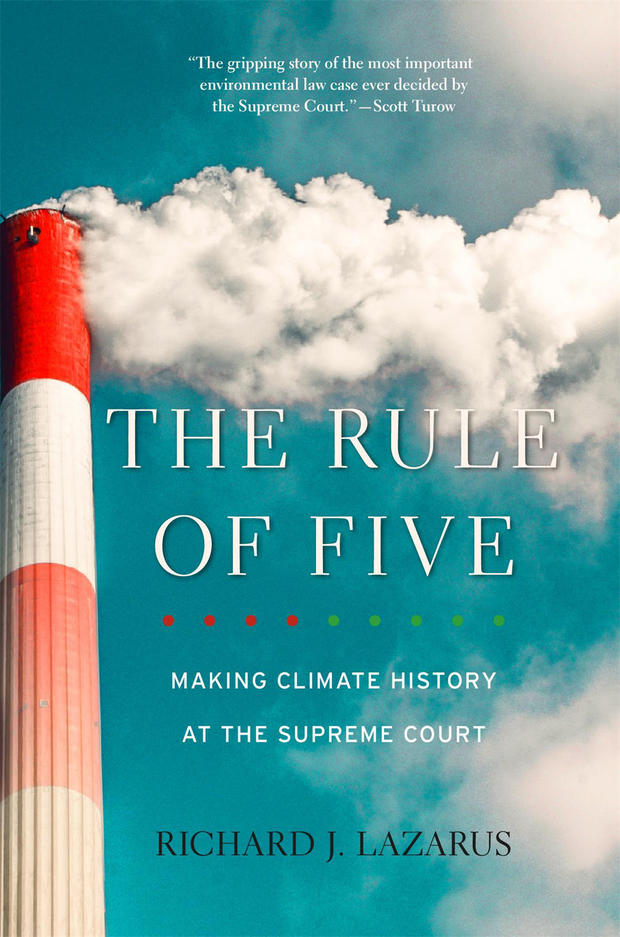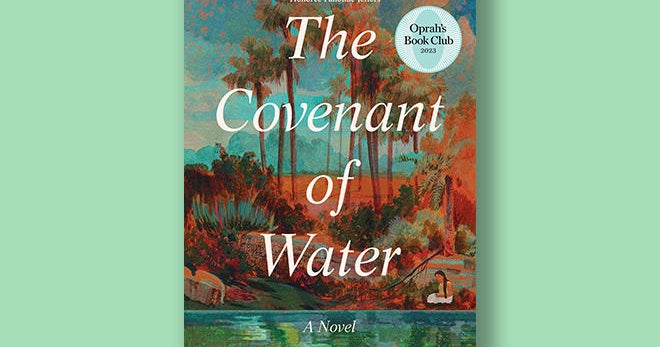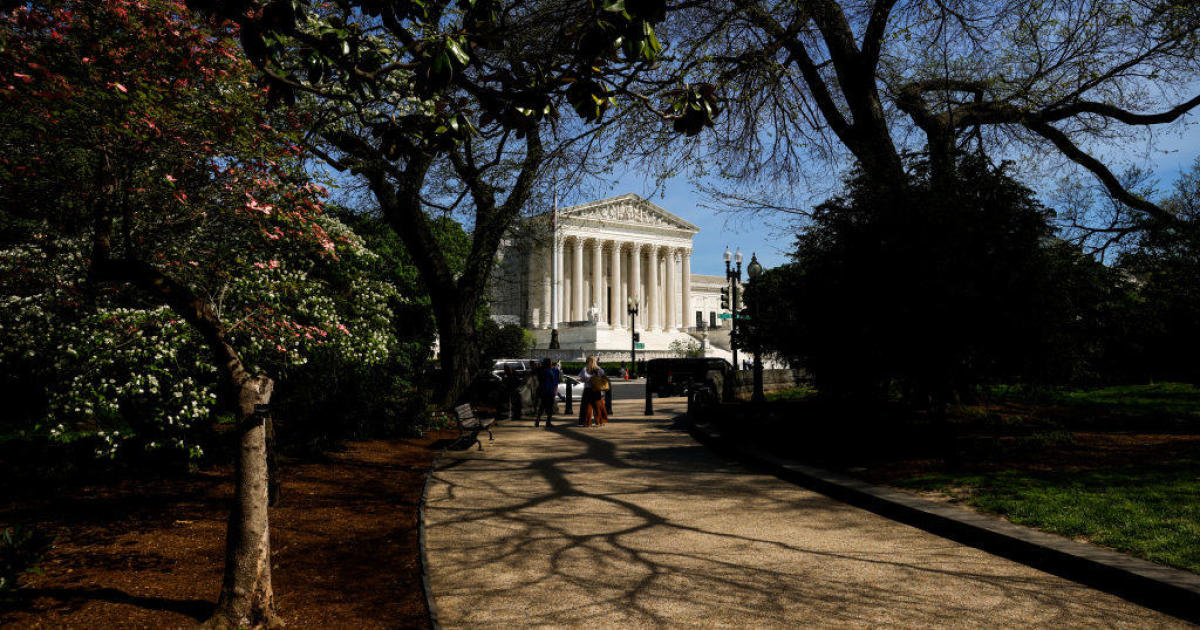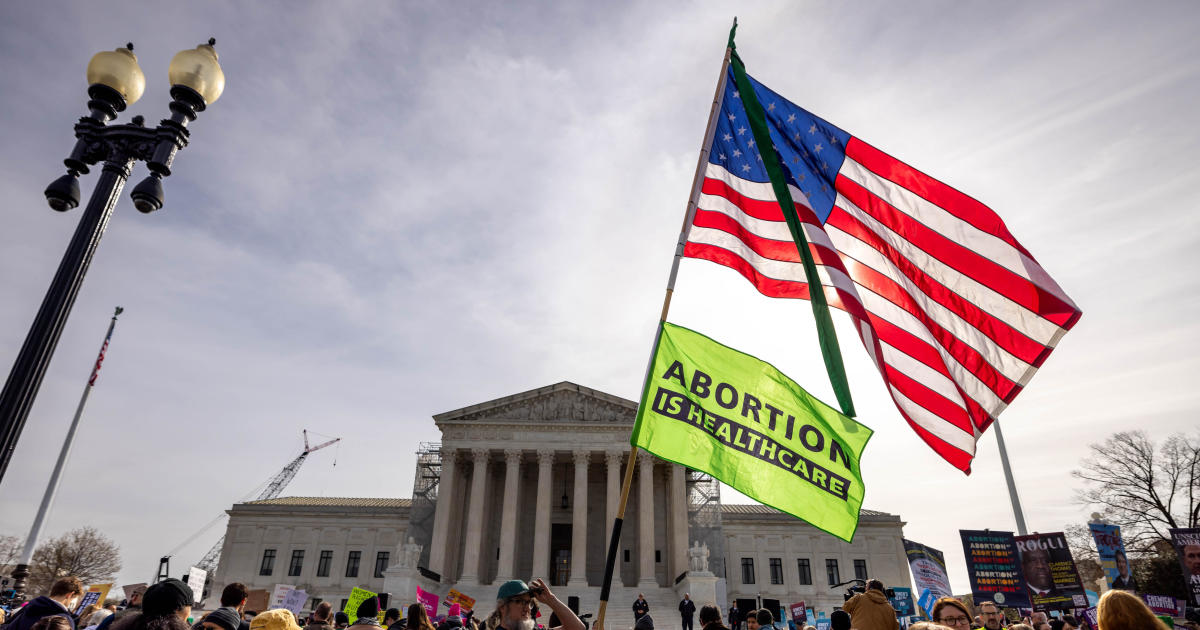Book excerpt: "The Rule of Five," on arguing climate change before the Supreme Court
In his book "The Rule of Five: Making Climate History at the Supreme Court" (Belknap Press), Harvard Law professor Richard J. Lazarus writes about the most important environmental case ever decided by the nation's highest court: whether the Environmental Protection Agency had authority to regulate greenhouse gas emissions from new cars – and whether the federal agency could be forced to do so by states affected by climate change.
Read the excerpt below, and don't miss Ben Tracy's interview with Lazarus on "CBS Sunday Morning" April 17!
As Jim Milkey began to speak, those in the Supreme Court Bar in the front of the courtroom shifted forward ever so slightly in their seats, eager to see which Justice would be the first to interrupt and ask a question. Most looked immediately to the one known for sporting a Cheshire-cat-like grin before ambushing his prey.
Justice Antonin Scalia had, after all, transformed oral argument. The number of questions the Justices asked almost doubled immediately after Scalia joined the Court in September 1986, increasing to an average of 104 questions per hour-long argument during Scalia's first year. By 2005, the year before Massachusetts was argued, the average number of questions asked by the Justices had ballooned to a whopping 156.
From the minute he joined the Court, Scalia made his presence known. During the very first argument on his very first day on the bench, Scalia asked twenty-eight demanding questions. And during one two-week period that Supreme Court Term, which runs October to October, he asked 30 percent of all the questions posed by the Justices. In case after case, Scalia peppered arguing counsel with questions, prompting Justice Lewis Powell, an old-school Virginian who was well known for his polite demeanor, to quip to Justice Thurgood Marshall: "Do you think he knows the rest of us are here?"
As a former law professor at the Universities of Virginia and Chicago, known for his lively questioning of students in the classroom, aggressive interrogations came naturally to Scalia. But this was more than just the judicial equivalent of classroom banter designed to ensure a full airing of the legal issues presented in a case. It was strategic.
* * * * *
There was nothing subtle about it. Scalia asked far more questions and far tougher questions of the attorney arguing the side he anticipated voting against than the side he expected to favor. His barbed, sometimes mocking questions highlighted weaknesses in a lawyer's argument. His loaded hypotheticals frequently trapped arguing counsel into answering in a way that made their legal position seem ridiculous or otherwise tied them in knots. As one of his former law clerks put it, stealing a line from one of the Justice's most famous dissenting opinions, "This wolf came as a wolf."
When the attorney for the side Scalia favored rose to speak, the Justice would either be completely silent or ask questions designed only to reinforce the points the counsel was making. And if that attorney was struggling in his response to another Justice's questions or answering in a way that Scalia considered problematic, Scalia would jump in to rescue the attorney, cutting off the bad answer by saying something like: "I would have thought your answer to that question would instead have been ...," followed by "Isn't that right?" To which counsel, spotting the obvious lifeline, would immediately reply: "That is absolutely right, Justice Scalia."
Milkey knew Justice Scalia would not be his friend on the morning of November 29. What he would toss Milkey's way would not be lifelines — more like hand grenades
* * * * *
Justice Scalia predictably pounced just seconds into Milkey's argument that the Massachusetts petitioners possessed the constitutionally required standing to bring its climate lawsuit in federal court. He asked nine questions on the standing issue in rapid succession, before any other Justice had a chance to chime in. And Scalia never relented. Every answer Milkey attempted to give was quickly interrupted by another question in the barrage Scalia unleashed: of the fifty-eight questions the Justices asked Milkey, Scalia asked twenty-three. His object was clear: to eviscerate Milkey's claim that the Massachusetts petitioners had the right to file a suit in federal court for relief from the consequences of climate change.
Scalia began by asking Milkey to establish that the harm Massachusetts would suffer is "imminent," a crucial element of standing. He demanded to know "when" the harm would happen, mockingly asking "When is the predicted cataclysm?"
The question, and the tone of its delivery, left little doubt as to Scalia's disdain for scientific projections of catastrophic consequences from climate change. He then directly questioned the existence of a scientific consensus on climate change, distinguishing between whether climate change was happening, about which he seemed to acknowledge there might be a consensus, and whether it might be "attributable to human activity," about which he suggested there was "not a consensus."
* * * * *
Scalia's questions were smart. They presented Milkey with rhetorical traps to navigate, and the verbally dexterous Justice was ready to seize on the slightest hint of a misstep. No Justice was better than Scalia at demonstrating with gusto how a lawyer's answer proved too little, too much, or nothing at all.
* * * * *
Anticipating precisely this challenge, Milkey had jotted down a few cryptic notes in longhand earlier that morning, which he had brought into the courtroom and placed on top of all his other notes. They were simple, direct admonishments to himself:
- no wind-up or filler
- stay on track
- get back on track
- answer the ? asked
- eye contact
- time = your enemy
Standing before the actual Justices, Milkey clicked into high gear. The failed moot courts were history. Milkey parried every one of Scalia's twenty-three questions with direct, succinct, and responsive answers. He maintained a clear thesis and stuck to it in a respectful, credible, and persuasive manner. The perpetual second-guessing, the torrent of skeptical questions during the moot courts, and seemingly endless debates within the Carbon Dioxide Warriors about what they should and should not argue had given him the knowledge he needed now to speak directly and with conviction. And the brutal moot courts had steeled him for the onslaught of pointed questions, more than in any other case he had argued in his decades as a lawyer.
* * * * *
Justice Scalia tried one last time to land a clean blow by questioning Milkey on the validity of his apparent assumption that there was a "straight line ratio" between reductions in greenhouse gas emissions and reductions in climate change harms. Milkey's response was the Supreme Court advocate's equivalent of the boxer's knockout punch. He turned the momentum of Scalia's attack right back at him, landing a hit in Massachusetts's favor.
Milkey clarified that he was not assuming a linear relationship but that, in fact, the lack of linearity meant that Massachusetts might well be suffering more, not less, harm. He backed this up with specific examples for both Massachusetts and New York, examples that were easily accessible to nonscientists like the Justices and in the case record.
* * * * *
Not one to give up easily, Scalia tried to land one final punch on the standing issue. He pushed Milkey once again on whether the harm could really be considered "imminent," given how many decades would pass between the time greenhouse gases were emitted into the atmosphere and the time when those additional greenhouse gases would cause harm. This time, Milkey responded with a succinct zinger: "Your Honor, once these are emitted the laws of physics take over, so our harm is imminent in the sense that lighting a fuse on a bomb is imminent harm." With a simple, everyday example, Milkey had explained how a threat could simultaneously be both in the present and in the future.
From "The Rule of Five: Making Climate History in the Supreme Court" by Richard J Lazarus. © 2020 by Richard J. Lazarus. Excerpt reprinted by permission of the Belknap Press of Harvard University Press. All rights reserved.
For more info:
- "The Rule of Five: Making Climate History at the Supreme Court" by Richard J. Lazarus (Harvard University Press), in Hardcover, Trade Paperback and eBook formats, available via Amazon and Indiebound
- Richard Lazarus, Harvard Law School




